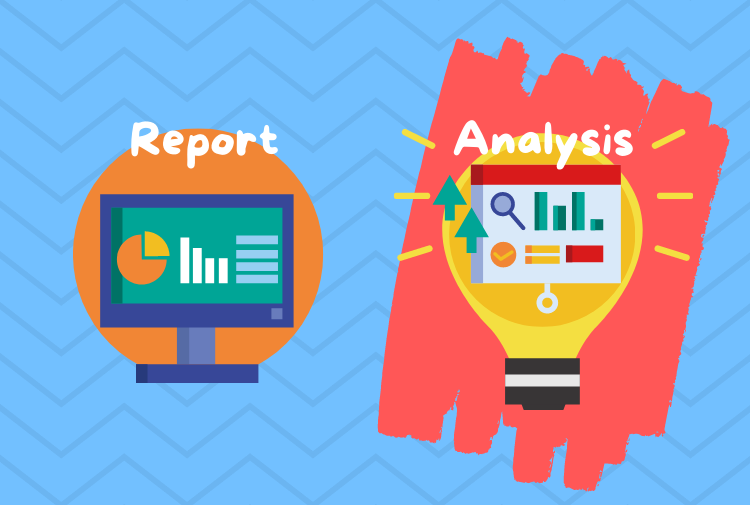
Promotional graphics are an essential part of any successful marketing campaign. They are the visual representation of your brand and message, and they play a crucial role in attracting and engaging your target audience.
However, creating effective promotional graphics can be challenging, especially if you are not familiar with the principles of design and the best practices of graphic design. In this blog, we will provide you with some great tips on how to create effective promotional graphics that will help you stand out from the competition and achieve your marketing goals.
Whether you are a small business owner, a marketer, or a graphic designer, this blog will provide you with valuable insights and practical tips to help you create high-quality promotional graphics that resonate with your audience.
The Importance of Promotional Graphics
Promotional graphics play a vital role in marketing and advertising because they serve as the visual representation of a brand, product, or service. They are the first thing that people see when they encounter an advertisement or visit a website, and they are often the primary factor that determines whether they will engage with the content or move on.
- Promotional graphics serve as the visual representation of a brand, product, or service.
- Effective promotional graphics can capture people’s attention and communicate a message quickly and effectively.
- Promotional graphics help to build brand recognition and create a positive impression.
- They can evoke emotions, helping to create a connection with the audience and increase engagement.
- Promotional graphics are crucial in digital marketing, where visual content is often the primary way that people consume information.
- They can be used across a variety of marketing channels, including social media, email marketing, and print advertising.
- Promotional graphics are essential for businesses that want to stand out from the competition and drive sales.
- They can help to differentiate a brand, create a unique identity, and establish a strong visual presence.
- Promotional graphics are an excellent way to showcase the features and benefits of a product or service in a visually appealing way.
- They can be easily shared and can help to increase brand exposure and reach a broader audience.
Effective promotional graphics can capture people’s attention, communicate a message, and evoke emotions, helping to build brand recognition, create a positive impression, and drive sales. They are particularly important in today’s digital age, where the vast majority of people rely on visual content to make purchasing decisions. In short, promotional graphics are essential for any business that wants to succeed in the competitive world of marketing and advertising.
Understanding the Basics of Promotional Graphics
To create effective promotional graphics, it is essential to understand the basics of graphic design and the principles that underpin effective visuals. In this section, we will discuss the types of promotional graphics, the key components of effective promotional graphics, and the principles of design that can be applied to create engaging visuals.
Promotional graphics can take many forms, including banners, posters, social media graphics, product images, and more. Regardless of the type of promotional graphic, there are certain key components that are necessary for it to be effective. These include:
- Clear and concise messaging: The messaging should be easy to read and understand at a glance. It should also convey the key benefit or value proposition of the product or service.
- Eye-catching visuals: The visual elements should be attention-grabbing and visually appealing. They should help to communicate the message and capture the audience’s attention.
- Branding: Promotional graphics should reflect the overall brand identity and style. They should use consistent colors, fonts, and imagery to create a cohesive look and feel.
When creating promotional graphics, designers can apply certain principles of design to create visuals that are engaging and effective. These include:
- Balance: A balanced composition can create a sense of harmony and help to draw the viewer’s eye to the most important elements.
- Contrast: Contrast can create visual interest and help to highlight important elements. It can be achieved through color, size, shape, or texture.
- Alignment: Alignment can create a sense of order and help to organize the elements within the design.
- Proximity: Proximity refers to the placement of elements within the design. Elements that are close together can create a sense of relationship and help to guide the viewer’s eye.
- Repetition: Repetition can create consistency and help to reinforce branding and messaging.
Understanding these basics of promotional graphics can help designers to create visuals that are effective in communicating their message, capturing attention, and driving engagement.
Types of Promotional Graphics
Promotional graphics can take many different forms, each with its own strengths and weaknesses. Choosing the right type of promotional graphic for a given situation depends on a number of factors, including the marketing goals, target audience, and marketing channels. In this section, we will discuss some of the most common types of promotional graphics.
- Banners: Banners are large graphics that are often used in outdoor or indoor advertising. They are typically printed on vinyl or fabric and can be hung from buildings, poles, or other structures. Banners are a great way to attract attention and can be used to promote events, products, or services.
- Posters: Posters are similar to banners but are smaller and often used in indoor settings. They can be printed on paper or cardstock and can be used to promote events, sales, or other promotions. Posters can also be used in-store to highlight specific products or services.
- Social media graphics: Social media graphics are designed specifically for use on social media platforms such as Facebook, Instagram, and Twitter. They can include images, videos, and animated graphics and are designed to capture attention and drive engagement.
- Product images: Product images are used to showcase products in a visually appealing way. They can be used on e-commerce websites, social media, or in print advertising to highlight product features and benefits.
- Infographics: Infographics are visual representations of data or information. They are designed to be easy to understand and can be used to explain complex concepts or statistics in a visually appealing way.
- Email graphics: Email graphics are used to create visually appealing emails that can help to increase open rates and engagement. They can include images, videos, and animated graphics.
These are just a few of the many types of promotional graphics that can be used in traditional marketing, direct response marketing, and advertising. Choosing the right type of promotional graphic depends on the marketing goals, target audience, and marketing channels being used. By understanding the strengths and weaknesses of each type of promotional graphic, marketers and designers can create effective visuals that help to achieve their marketing objectives.
Planning and Preparing for Promotional Graphics
Planning and preparation are essential when it comes to creating effective promotional graphics. A well-planned approach can help to ensure that the promotional graphics are aligned with the overall marketing goals and objectives and that they effectively communicate the intended message to the target audience. In this section, we will discuss some of the key steps involved in planning and preparing for promotional graphics.
- Determine the marketing objectives: The first step in planning promotional graphics is to determine the marketing objectives. What are the goals that the promotional graphics are intended to achieve? Are they intended to increase brand awareness, drive sales, or promote a specific event or product launch? Once the marketing objectives have been defined, they can be used to guide the development of promotional graphics.
- Define the target audience: The target audience should be defined in terms of demographics, psychographics, and other relevant characteristics. Understanding the target audience is essential when it comes to creating promotional graphics that are effective in capturing attention and communicating the intended message.
- Research the competition: Researching the competition can help to identify best practices and areas where the promotional graphics can differentiate from the competition. By understanding what the competition is doing, marketers and designers can create promotional graphics that stand out and effectively communicate the message.
- Create a design brief: A design brief should be created that outlines the key elements of the promotional graphics, including the messaging, visual style, and branding guidelines. The design brief should be used to guide the development of the promotional graphics and ensure that they are aligned with the marketing objectives and target audience.
- Develop a content plan: A content plan should be developed that outlines the messaging and visuals for each promotional graphic. The content plan should be developed in collaboration with the marketing team and other stakeholders to ensure that the messaging is aligned with the overall marketing strategy.
- Choose the right tools and resources: The right tools and resources are essential when it comes to creating effective promotional graphics. Design software, stock images, and other resources can help to streamline the design process and ensure that the final product is of high quality.
By following these steps, marketers and designers can plan and prepare for the creation of effective promotional graphics that effectively communicate the intended message to the target audience and help to achieve the marketing objectives.
Creating Promotional Graphics
Creating promotional graphics is a creative process that involves bringing together the messaging, visuals, and branding guidelines to create a compelling visual that resonates with the target audience. In this section, we will discuss some of the key steps involved in creating promotional graphics.
- Develop a visual concept: The first step in creating promotional graphics is to develop a visual concept that aligns with the marketing objectives, target audience, and branding guidelines. The visual concept should be developed in collaboration with the marketing team and other stakeholders and should be based on the content plan developed during the planning phase.
- Choose the right visuals: Choosing the right visuals is essential when it comes to creating effective promotional graphics. The visuals should be aligned with the messaging and the target audience, and should effectively communicate the intended message. Stock images, custom illustrations, and original photography can all be used to create compelling visuals that capture attention and drive engagement.
- Write the copy: The copy should be developed in collaboration with the marketing team and other stakeholders and should be aligned with the overall messaging and branding guidelines. The copy should be concise, clear, and compelling, and should effectively communicate the intended message.
- Design the promotional graphic: The promotional graphic should be designed using design software such as Adobe Photoshop, Illustrator, or InDesign. The design should be based on the visual concept and the content plan and should incorporate the chosen visuals and copy. The design should be visually appealing and should effectively communicate the intended message.
- Test and refine: Once the promotional graphic has been designed, it should be tested to ensure that it effectively communicates the intended message and resonates with the target audience. Testing can involve focus groups, surveys, or A/B testing to determine which promotional graphics are most effective. Based on the results of testing, the promotional graphic should be refined as needed to ensure that it effectively achieves the marketing objectives.
Creating effective promotional graphics requires a combination of creativity, strategy, and technical skill. By following these key steps, marketers and designers can create promotional graphics that effectively communicate the intended message and help to achieve the marketing objectives.

Testing and Refining Promotional Graphics
Testing and refining promotional graphics is an essential part of the design process. This step involves evaluating the effectiveness of the promotional graphics in achieving the marketing objectives and resonating with the target audience. In this section, we will discuss some of the key steps involved in testing and refining promotional graphics.
- Set clear objectives: The first step in testing and refining promotional graphics is to set clear objectives. The objectives should be measurable and should be aligned with the overall marketing strategy. For example, the objectives might be to increase click-through rates, drive sales, or increase brand awareness.
- Choose the right testing method: There are a variety of testing methods that can be used to evaluate the effectiveness of promotional graphics. A/B testing involves creating two versions of the promotional graphic and testing them against each other to determine which is more effective. Focus groups involve gathering a small group of individuals to evaluate the promotional graphics and provide feedback. Surveys can also be used to gather feedback from a larger group of individuals.
- Gather feedback: Once the testing method has been chosen, feedback should be gathered from the target audience. The feedback should be used to evaluate the effectiveness of the promotional graphics in achieving the marketing objectives and resonating with the target audience. Feedback can be gathered through surveys, focus groups, or other methods.
- Analyze the results: The feedback gathered should be analyzed to determine which promotional graphics are most effective in achieving the marketing objectives. The results should be used to refine the promotional graphics and improve their effectiveness.
- Refine the promotional graphics: Based on the results of the analysis, the promotional graphics should be refined as needed to improve their effectiveness. This might involve changing the messaging, visuals, or overall design of the promotional graphics.
- Test again: Once the promotional graphics have been refined, they should be tested again to determine whether they are more effective in achieving the marketing objectives and resonating with the target audience.
Testing and refining promotional graphics is an ongoing process that can help to ensure that the promotional graphics are effective in achieving the marketing objectives and resonating with the target audience. By following these key steps, marketers and designers can create promotional graphics that effectively communicate the intended message and help to achieve the marketing objectives.
Optimizing Promotional Graphics for Different Platforms
Optimizing promotional graphics for different platforms is an essential part of the design process. Each platform has its own specifications and guidelines for image size, resolution, and format. In this section, we will discuss some of the key steps involved in optimizing promotional graphics for different platforms.
- Know the platform specifications: The first step in optimizing promotional graphics for different platforms is to know the platform specifications. Each platform has its own specifications for image size, resolution, and format. For example, Facebook recommends that promotional graphics be 1200 x 628 pixels, while Instagram recommends 1080 x 1080 pixels.
- Choose the right format: Once you know the platform specifications, you should choose the right format for the promotional graphics. Different platforms support different image formats, such as JPEG, PNG, or GIF. Choosing the right format can help to ensure that the promotional graphics are optimized for the platform and display correctly.
- Consider the platform audience: When optimizing promotional graphics for different platforms, it is important to consider the platform audience. Different platforms have different audiences with different preferences and behaviors. For example, Instagram users tend to respond well to visually stunning images, while Twitter users prefer concise and informative graphics.
- Modify the design: To optimize promotional graphics for different platforms, you may need to modify the design. This might involve resizing the graphics, changing the orientation, or modifying the layout. The goal is to ensure that the promotional graphics are optimized for the platform and display correctly.
- Test and refine: Once the promotional graphics have been optimized for the platform, they should be tested to ensure that they display correctly and effectively communicate the intended message. If needed, the promotional graphics should be refined further to improve their effectiveness on the platform.
Optimizing promotional graphics for different platforms is an ongoing process that can help to ensure that the promotional graphics are effective in achieving the marketing objectives and resonating with the target audience. By following these key steps, marketers and designers can create promotional graphics that effectively communicate the intended message and help to achieve the marketing objectives on different platforms.
Conclusion
In conclusion, creating effective promotional graphics requires a combination of creativity, strategic thinking, and technical expertise. By understanding the basics of promotional graphics, choosing the right type of graphic, planning and preparing for the design process, creating visually appealing graphics, and testing and refining the designs, marketers, and designers can create promotional graphics that effectively communicate the intended message and resonate with the target audience. It is also important to optimize promotional graphics for different platforms, ensuring that they display correctly and effectively communicate the intended message. With these key steps in mind, businesses and marketers can create promotional graphics that drive engagement, increase brand awareness, and ultimately help to achieve their marketing objectives.




